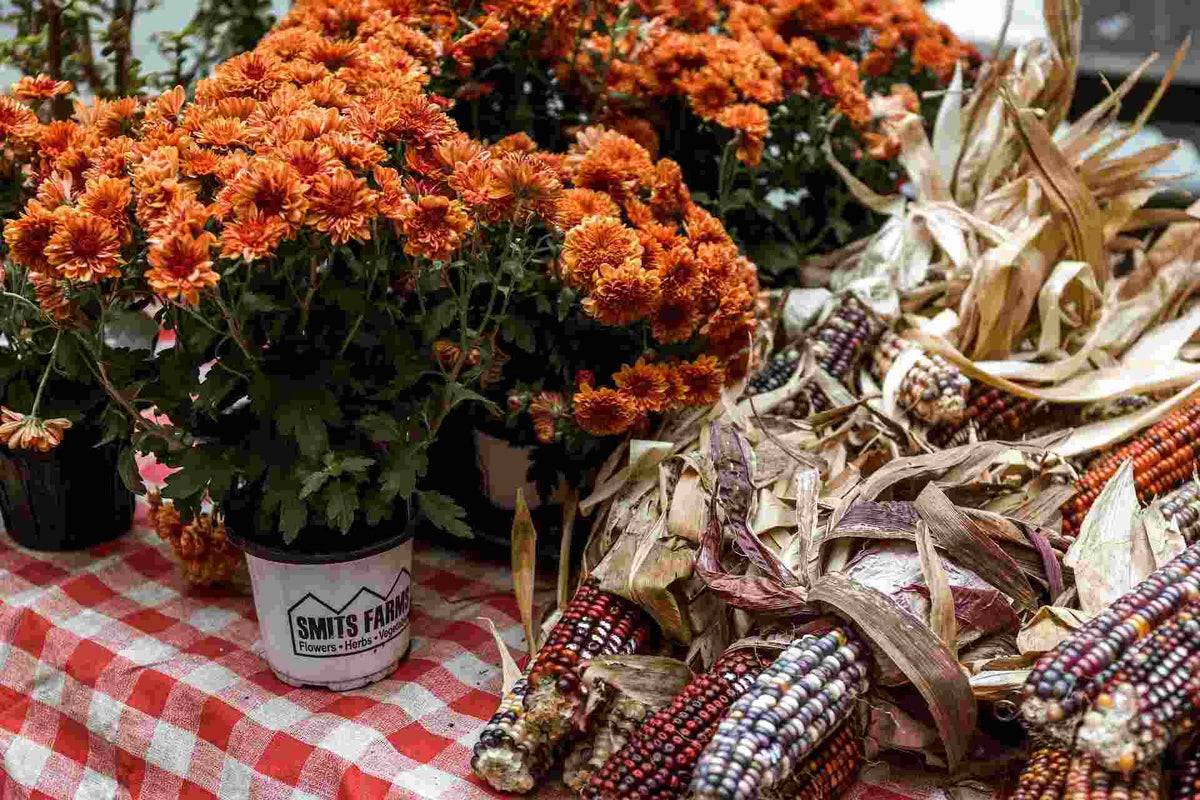How to Create a Fall Container Garden
Table of Contents
- Choosing Containers
- Choosing Plants
- Creating Colorful Combinations
- Soil Recommendations
- Care & Maintenance
- Conclusion
As the weather cools and festive decor starts appearing on doorsteps all around your neighborhood, you may want to update your bare or out-of-season porch. With a fall container garden, you can design a stunning display that fits in with the neighbors, lasts the entire season, and even provides a little something extra for the kitchen!
1. Choosing Your Containers
There are a variety of options for your fall container garden, each with its own list of pros and cons. Get an overview of the possibilities before making a final decision, and keep in mind that some fall container plants do better in certain materials!
Clay or Terracotta
Clay and terracotta pots are made from natural, porous materials that could be ideal for your environment. They allow the roots of your plants to breathe, but they need more frequent watering, as they allow the sun to dry out the soil pretty quickly. These natural pots cannot withstand freezing temperatures and tend to overheat in direct sunlight. We recommend these pots in climates that stay relatively stable throughout the year or for fall container plants that can withstand arid environments.
Plastic
These containers are also very lightweight, making them easy to move and reposition – but they’re easier to knock over. Durable and frostproof, plastic containers come in nearly endless sizes, shapes, and color combinations for added versatility.
Metal
One of our least favorite options for any garden, metal pots conduct heat and can overheat the roots of your plants. They can also develop rust, negatively affecting soil health and poisoning your garden.
Stone
We love stone pots because they’re frostproof and provide a fall container garden that can last for years. However, stone is usually thick and heavy, so it can be very difficult to move larger plants or repot them when the time comes. Keep an eye on the type of stone for your pot, as there is a lot of variety in the porousness of different rocks, affecting your watering timetable.
Wood
Wood is a great choice for your fall container plants, as it has excellent water retention capabilities. You will probably need a liner for wooden crates or baskets to keep the soil from falling out.
Remember, you must remove and cleanse any leftover soil or debris if you're reusing old containers. Wash your old pots with one part vinegar and three parts water.
2. Choosing Your Plants

Depending on your theme and personal preferences, your fall container garden could incorporate many types of plants. Just make sure you cover three basic categories: thrillers, spillers, and fillers.
Thrillers
We call these thrillers because they’re the centerpiece of your fall container garden. Tall, upright plants with unique characteristics that are about 1.5 times the height of your pot are the optimal choice. You want these plants to stand out due to their bright coloring, beautiful flowers, or unique shape. We like placing thrillers in the center of the pot, so they’re visible from all sides.
Some of our favorite thrillers include small butterfly bushes, chrysanthemums, and fountain grass.
Spillers
These sprawling plant types will tumble over the sides of your container and soften the edges of your pot. They add interest, contrast, and movement to the thriller in the center of your planter. You can choose spillers that complement or contrast the colors of your centerpiece florals.
We love heucherella, Lysimachia, marigolds, and coralbells for this part of your fall container garden!
Fillers
If there are any empty spaces in your pot at this point, you can use fillers to enhance the composition, adding more texture and color. Weave your fillers throughout the planter for full coverage.
So what makes a good filler plant? Consider flowering cabbage, broccoli, or kale, which are also edible!
3. Color Combinations
Whether you choose analogous or complementary colors, it’s all up to you! If you opt for analogous colors, they’ll harmonize a little more, as they sit next to each other on the color wheel. One example that may work for you is a pot with various shades of orange and yellow.
With contrasting colors, you’re looking at those that sit opposite each other on the color wheel. Think about using purple and yellow or orange and blue plants in the same planter. And don’t forget to incorporate your container color into the entire arrangement!
4. Soil Options

The soil in your fall container garden will definitely depend on which plants you choose. Ideally, you want plants that have similar soil requirements. Regardless of which type of soil you choose, there are some standard guidelines for fall plants, including:
- Use peat-based moss soil with added nutrients
- Do not use garden soil, as it’s not sterile and can house harmful insects or fungi
- Provide 8-10 inches of soil to establish plant roots
- Fill your container with soil only up to 2” from the rim of your pot
5. Care & Maintenance
You want your fall container garden to look like it’s bursting with plants, but that may mean cramped roots that need extra watering and nutrients. Our automatic plant watering system will ensure that your fall container plants receive the right amount of water without over or under-watering your plants. It's also important to create a fertilizer schedule to ensure that your plants thrive. We recommend a fertilizer that’s high in phosphorus and low in nitrogen.
Patio Growers Is Here to Help
At Patio Growers, we developed a unique self-watering system for easier care and maintenance of balcony and porch gardens. Utilize our products when you head out of town to keep your plants alive and thriving!
And for more tips on outdoor gardening, check our blog frequently for new posts.

